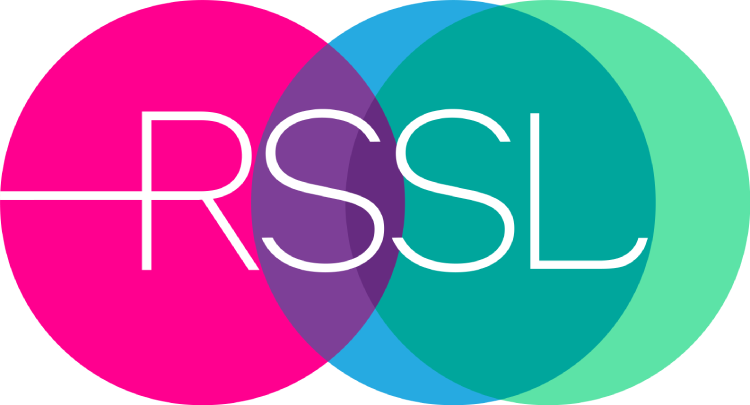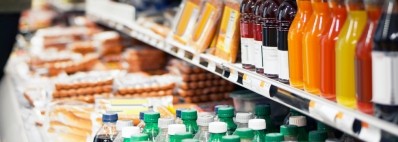Promotional Features
Testing times for sustainable packaging
New legislation, consumer pressure and product differentiation are all reasons to rethink packaging with sustainability in mind. But it still needs to be fit for purpose. David Wright, RSSL’s packaging technical specialist, explains how packaging testing can support successful outcomes.
A raft of new packaging regulations designed to reduce waste and improve recycling is pushing manufacturers to reconsider traditional packaging formats – both for existing and new products. The UK’s Plastic Tax, for example, penalises plastic packaging with less than 30% recycled content, making it the first country to tax virgin plastic packaging. The EU Packaging Levy, in contrast, applies to plastic waste that is not recycled at end of life and is part of the bloc’s wider measures to fight climate change and support the circular economy. Keeping pace with these and other changes is essential to remain compliant in an already challenging environment.
At the same time, consumers want to make environmentally responsible choices. A significant 86% of Americans are reportedly more likely to purchase a brand if the packaging is considered sustainable. And global packaging trends point to demand for greater transparency about everything from ethical materials to recyclability and carbon emissions. So it’s not surprising that the UK’s major retailers are responding with bold commitments to recycling initiatives and sustainability goals – and expect suppliers to fall in line.
With environmental sustainability driving innovation, there has never been a busier time for packaging and materials science. But these developments will only gain traction and acceptance if the new packaging also fulfils its primary purpose in terms of product safety, integrity and shelf life.
Manufacturers and brand owners switching to more eco-friendly materials and formats need to know that the physical and functional properties will match those of the original. And knowing how sustainable packaging options will impact NPD concepts, in terms of stability or oxidation for example, can help shape developments and avoid potential problems later on.
This is where RSSL’s food packaging testing service has a vital role to play. Providing a complete picture of packaging performance, it enables manufacturers to make informed decisions and confidently move forward.
So what needs to be considered?
Packaging profile
Primary packaging is both a container and a barrier. In other words, it needs to keep the product in and unwanted substances out – so evaluating its ability to perform this role effectively is key. A new coating on a sustainable drink carton, for example, should not only prevent the liquid leaking out but also protect product integrity and shelf life by acting as a reliable oxygen barrier.
Of course, every product has different attributes and this must be reflected in the type of testing that is carried out. Certain fat-based products are susceptible to rancidity so ensuring packaging is capable of excluding oxygen is fundamental. For other applications, it may be a question of keeping water out to prevent microbial spoilage or pungent flavours in to retain the desired taste profile and stop tainting other products on the shelf next to it. In each case, analytical techniques designed to measure the relevant packaging properties will establish whether the barrier protection it offers is sufficient.
The main purpose of secondary packaging, on the other hand, is to augment the protection provided by the primary packaging and ensure product integrity right up to the point of consumption. This means surviving the rigors of handling during transit and storage; from manufacturer and distributor to retailer and end consumer.
Not surprisingly, much of this testing focuses on assessing the mechanical and physical properties of the packaging. This involves using a variety of methods to test the strength and seal integrity of the proposed new material. Evaluating the forces or pressures it takes to tear, crush or rupture a packaging concept tells us a lot about how it would perform in the real world and whether it’s robust enough to withstand the demands of the supply chain. A similar approach can be applied to assess the physical properties of primary packaging too.
Attention also needs to be given when assessing functionality and user experience. A compostable bag may win consumer approval for its eco-friendly credentials but is unlikely to become a repeat buy if it can’t be opened and/or resealed easily. A tensile test designed to measure the force required will resolve this particular issue.
But that’s not all.
Beyond basics
It’s equally important to understand how packaging will behave on the production line, particularly for manufacturers that are replacing existing formats with more sustainable ones. No company wants to have to go to the expense of installing additional equipment to accommodate more new packaging, so testing it for friction characteristics and slip resistance can be a valuable exercise. Meanwhile, suppliers of the sustainable materials can use this data to support practical application in manufacturing operations. Creating seals that can immediately withstand the weight of product at the point of filling is important. Knowing what sealing parameters optimise seal strength is therefore important and can be evaluated in the lab, minimising interruption to production.
In fact, the benefits of building a detailed understanding of the properties of new packaging materials also extend to the packaging design process. With this analytical data, manufacturers can use computer-based modelling to create a so-called ‘digital twin’ and simulate various tests to predict the behaviour of different prototypes. What happens if it’s dropped? Will it survive transit intact? How permeable is it? And many other important questions can be answered using this virtual platform.
As such, it helps to significantly reduce the time and cost required to eliminate unsuccessful iterations. With much of the assessment carried out using computer software, manufacturers only need to physically produce the top performing prototypes to undergo the final round of real-world testing.
This joined-up thinking is also a distinct advantage in the context of shelf life. Packaging plays a fundamental role in preserving product shelf life and, in some cases, can even improve it. So, if you understand the shelf life of a product, such as the threshold at which moisture content or oxygen exposure will start to damage its quality, this information can help shape the required packaging properties. Working across product and packaging in this way means RSSL has a fully rounded perspective of potential issues and how they can be addressed to optimise desired shelf life.
Not only that, our proven shelf-life capabilities also help to identify and avoid overpackaging: where excessive amounts of packaging material are used to achieve unnecessarily high barrier properties. This is not just damaging to the environment – let’s not forget that even sustainable materials need to be manufactured and transported – it also adds unwanted and unnecessary additional financial costs.
Agile approach
Within this innovative space, the ability to adapt and pivot to new developments is key. Traditional tests for measuring fundamental packaging properties, such as strength and integrity, are no longer suitable for many new sustainable materials and formats. Greater use of more recycled materials and different pack formats demands a different approach, which is why, when needed, RSSL offers bespoke method development that is targeted and relevant to each client project.
And the same is true when it comes to the changing regulatory environment. The upcoming EU directive 2019/04, for example, sets out the requirement for caps of non-returnable plastic bottles to remain tethered even after opening. As well as influencing packaging design, the move has specific implications for testing strategies which now need to evaluate whether the cap connection is strong enough to remain in place through product use, disposal and the recycling chain. Again, RSSL is reacting to both this and future industry developments with tailored testing methods designed to help clients demonstrate compliance.
As manufacturers continue to investigate sustainable packaging formats and regulatory bodies tighten legislation, ensuring the chosen option works on every level has never been more important. And even though infrastructure to support recycling ambitions may not yet be in place, the push to get ready is gathering pace. There is much that the food industry needs to do but working with RSSL’s packaging testing team is a good place to start.
To find out more about how RSSL can support your packaging testing visit www.rssl.com or email radhvevrf@effy.pbz or call +44 (0)118 918 4076.





